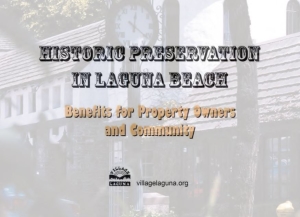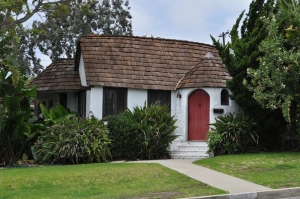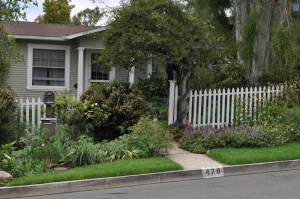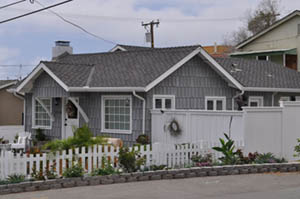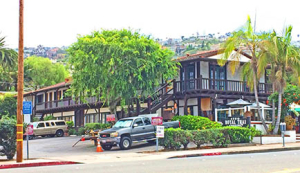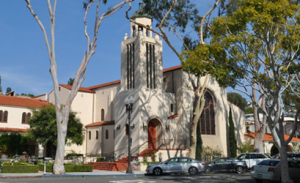 Historic Preservation
Historic Preservation
The history of Laguna Beach is an integral part of its charm and its persistent memorable images. The story of how our community came to be is not only what we market to the world, but it is what makes us so comfortable and delighted to be here. Carrying on the artistic, environmentally caring traditions makes us feel our place in the unique story that is Laguna Beach. History is not best experienced by reading books and looking at old photos, it is felt deeply by being here, being part of the continuing lives that march through the artifacts of time.
Those artifacts are historical resources, buildings and properties, and saving them while providing enjoyment and livability for their occupants and owners has been the focus of the city’s Heritage Committee for years. Their work since early 2015 has involved the public intensively in updated efforts to improve our historic preservation program.
The staff and the committee offered monthly workshops on all the topics related to historic preservation, including the historic register, the inventory of historic resources, and the interface of the Laguna Beach program with the California Environmental Quality Act (CEQA).
Questions have been raised about what parts of the historic preservation program are voluntary and which are required. There are national and state programs for historic preservation, and in 1981 Laguna Beach undertook an inventory of historic resources under state guidelines. This inventory and a historic preservation element and ordinance were adopted in the 1980s. Participation in the preservation program was voluntary, but incentives were granted to property owners who committed to preserve their historic properties and put them on the Historic Register.
Then in 1991 the state added historic and cultural resources to the list of items to consider when evaluating a project under CEQA. That means that demolition or significant changes to a historic resource must be considered a potential environmental impact and evaluated accordingly. CEQA is a required process. However, it doesn’t dictate conclusions. It does require alternatives to be considered and evaluated before the requested permits are granted.
However, it wasn’t until 2005 that the city started applying CEQA to historic resources. Here is where property owners who thought historic preservation was voluntary faced the prospect of additional review—and raised concerns.
It was more than five years later that there was an acknowledgement that there were historic resources that were missed in the 1981 inventory. On the inventory or not, if a property is historic it is subject to CEQA evaluation. Understandably owners of properties not on the inventory were frustrated to find historic criteria being imposed on buildings they did not know were considered historic.
Belatedly, the city is finding ways to apply the rules and procedures that should have been in place since the 1991 change in the California Environmental Quality Act.
So this is the situation the Heritage Committee, Design Review Board and Planning Commission have been sorting out in the new ordinance—with plenty of input from the public—addressing the concerns that have surfaced. The ordinance produced by the Heritage Committee clarifies the process for review, provides for an early determination of historic status, specifies disclosures in real estate transactions, and provides for a style guide that explains the characteristics of historic buildings and gives guidelines for making additions and changes. The Committee stressed that owners of historic properties should be given priority treatment at city hall, and provided with all the incentives available. The Committee has repeatedly emphasized that there are many possibilities for enhancing and adding to historic buildings while preserving their character-defining features.
The testimony at hearings was dramatic, some property owners, feared that their property values were diminished by being considered historic. One man complained that the house he had just inherited would be difficult to sell because of the historic designation. Shortly after his testimony the property was listed and it sold for more than the asking price. The buyers were ecstatic that they had found a historic property. By preserving it under the historic preservation ordinance they were able to apply for the Mills Act, saving significantly on property taxes.
None of our properties are “generic” lots; each one of them has distinguishing features, both favorable and limiting. Views or not, geologic stability, water courses, slopes, access—history is part of this menu too. Addressing it systematically, with sensitivity and a positive approach will result in preserving our community’s historical resources and at the same time provide residents with the distinctive and comfortable living environments that historical properties offer.
Status of the Ordinance, September, 2017
The Heritage Committee and the Design Review Board approved a revised ordinance that would increase the incentives for preservation and reduce the difficulties by developing local guidelines for alterations to historic properties that have been rated C for “contributory” rather than E for “excellent” or K for “key.”
The Planning Commission, in contrast, proposes a radical change in the City’s approach to historic preservation by declaring C-“contributory” structures “not historic” and excluding them from the historic register while at the same time proposing to grant them almost all the ordinance’s benefits and requiring a written agreement to preserve them.
As “not historic” C “contributory” structures will be ineligible for use of the State Historic Building Code, exempt from Heritage Committee review, and unprotected by the special conditions for demolition that apply to structures recognized as historic.
The Commission also proposes to leave the City’s historic resources inventory out of the ordinance. The inventory, a list of more than 500 structures presumed eligible for listing on the City’s historic register and for preservation incentives, has been the basis of the City’s program since the 1980s.
Instead, the Commission’s version of the ordinance envisions a process whereby alterations to any structure in Laguna that is 70 years old or older will require prior examination of the structure (at the City’s expense) for possible historical significance by the planning director, the Heritage Committee, and/or the Design Review Board.
On September 6 the Planning Commission read through the revised draft of the Historic Preservation Ordinance and declared itself prepared to send it on to the City Council for adoption after one final look on October 18.
The Commission seems to have been trying to please those who testified against being a part of the historic preservation program. Many simply wanted out of the system, and the new ordinance seems unlikely to make them much happier. In fact, it increases the uncertainty of their situation. At the same time, the views of the nearly 300 Laguna property owners whose homes are on the register, the hundreds of others who are living in houses on the inventory without complaint, and many others who value the special character of our town have been missing from their discussion.
